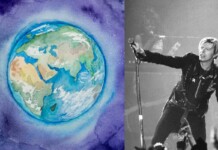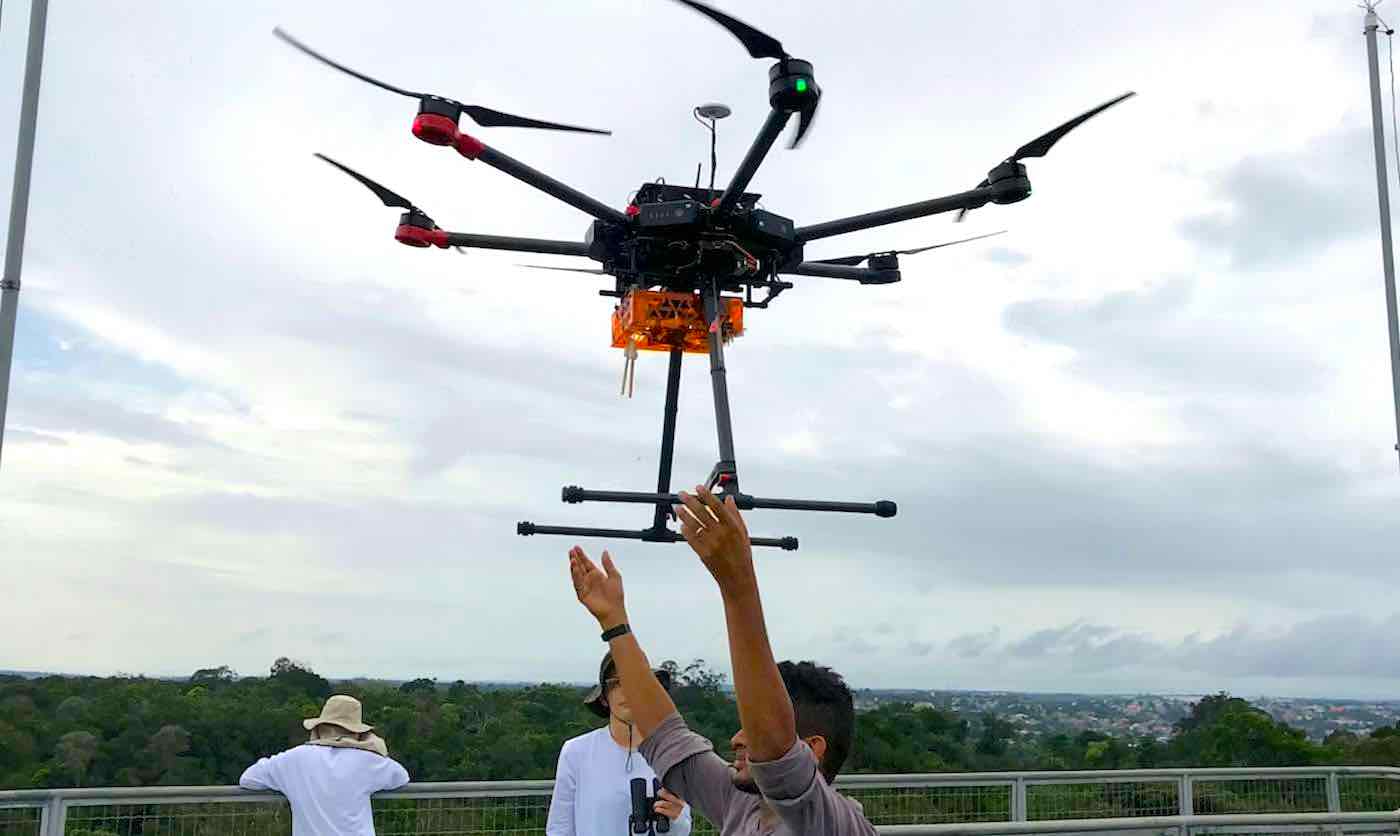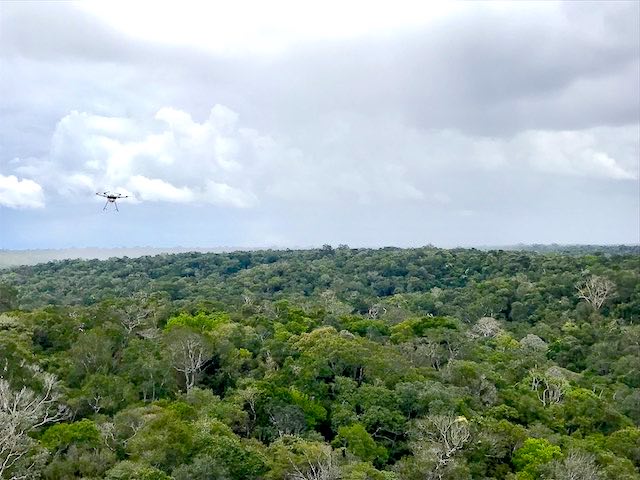
The same drones used to film Hollywood movies have been repurposed for Harvard researchers to study the Amazon.
The unmanned aerial vehicles (UAVs), formerly used for filming blockbusters like Skyfall and The Wolf of Wall Street, have been specially adapted to withstand the heat and humidity of the largest tropical rainforest in the world.
Until recently scientists relied on towers, aircraft, and satellites to help them understand the habitat, but the data they collected was limited and biased to certain ecosystems.
The use of powerful, six-bladed “hexacopters” has enabled researchers to monitor crevices that were previously unreachable and assess how the forest is responding to climate change, deforestation, and fire.
MORE: Students Invent Door Handle for Public Bathrooms That Can Clean and Sanitize Itself
Scot Martin, Harvard University Professor of Environmental Science and Engineering and Professor of Earth and Planetary Sciences, is a part of the team using the UAVs to collect the new data.
“Normally when people think of drones, they think taking pictures,” Martin said. “These types of UAVs, called hexacopters for their six blades, are also used in Hollywood to film movies and television shows.
“Instead of filming or taking pictures, scientists attach a one-kilogram chemical-sensing package to the front. [The package] is like an electronic nose sensing the forest.”
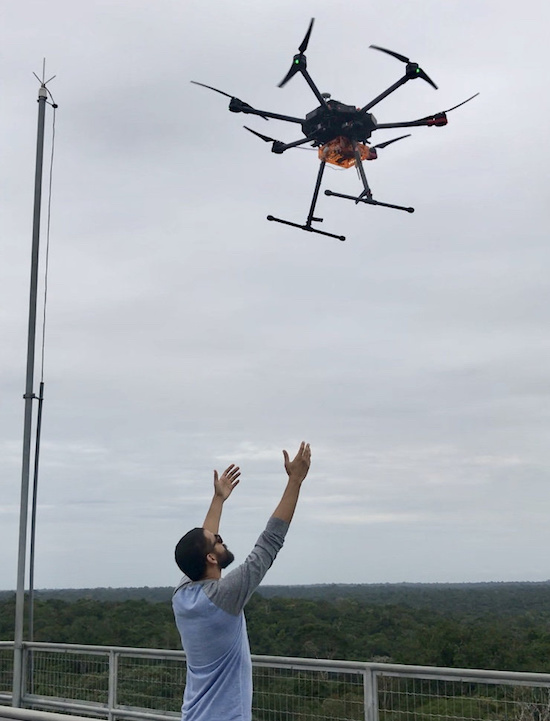
Throughout the Amazon, a handful of towers sit atop hills, measuring data from the nearby environment and relaying it back to scientists.
Now Harvard researchers, in collaboration with experts at Amazonas State University (UEA) in Brazil, have a way to measure the areas that the towers cannot reach.
MORE: Hyundai Launches First Car With Solar Roof Charging System
“If you want to understand the forest, that is where the UAV fits in. It’s the middle ground,” Martin said. “It gives us a new ability to respond to science questions.
“This study is showing what can be possible.”
The UAVs are released from the top of the old observation towers and can fly for around 17 minutes before they need to be charged.
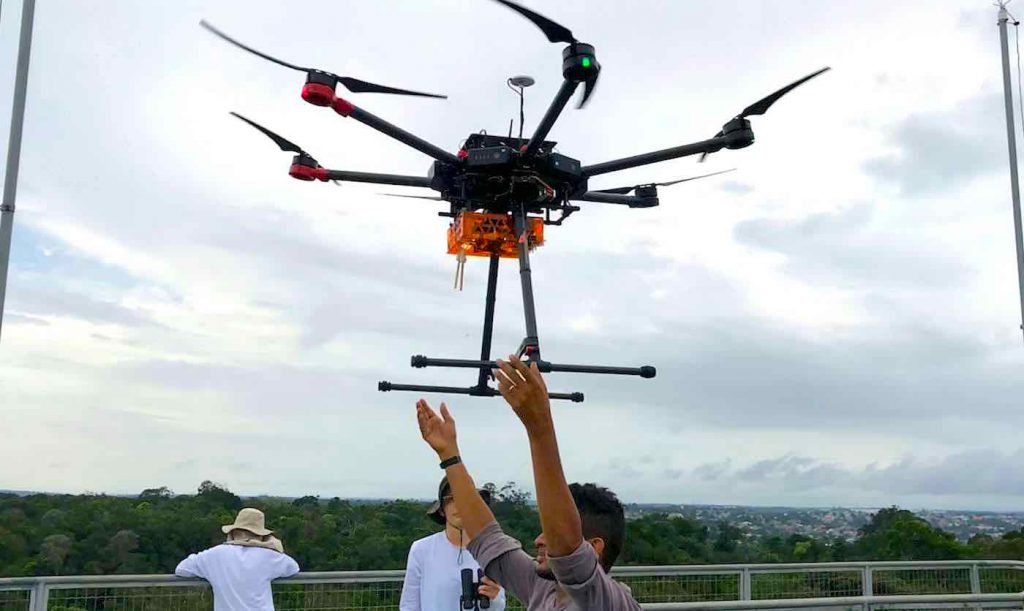
Every plant on earth emits unique vapors, known as volatile organic compounds (VOCs), which can fluctuate when they are exposed to stressors such as floods and droughts.
Sensors attached to the drones can monitor these VOCs, to determine how the plants’ health is adapting to such stressors as climate change and extreme weather.
“It sounds like crazy science fiction, but it’s not,” said Martin.
CHECK OUT: Family Farms Use ‘Crop Mobsters’ to Prevent More Than 1 Million Servings Of Food From Going To Waste
Harvard currently has a grant from the National Science Foundation for a three-year research project in the rainforest, but Martin envisions his research continuing in the biodiverse Amazon for many years to come.
“Ten years from now, I will probably still be doing research there,” he said.
“I expect that drones will be used in scientists’ tool chests more and more around the world in the future.”
(WATCH the Harvard video below)
Be Sure And Share The Good News With Your Friends On Social Media…





